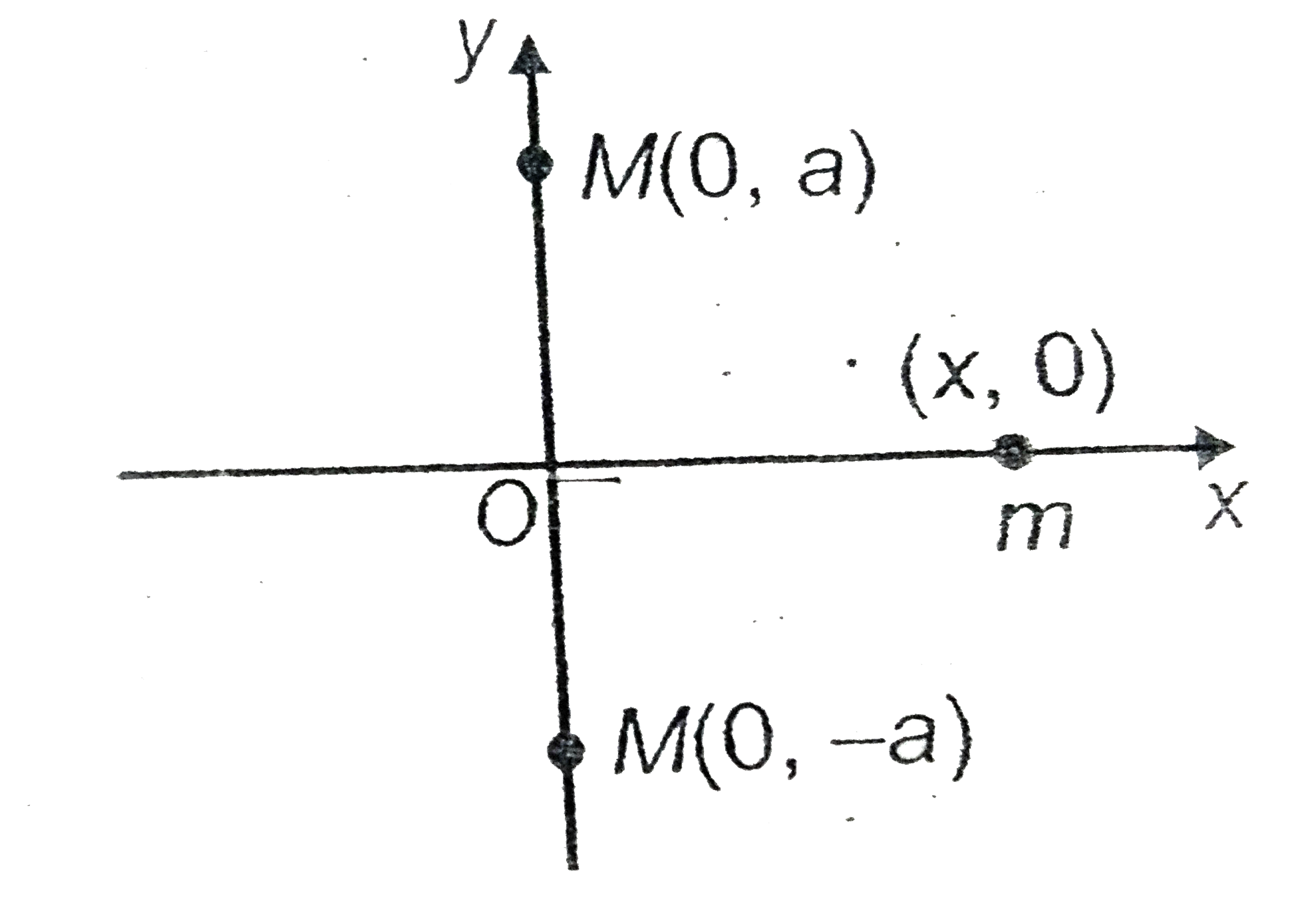Two particles each of mass 1 g are placed at distance of 1 m and 3 m respectively from the origin along x-axis. The centre of mass of the system from the origin is Solution in Bengali
1 m
2 m
2.5 m
3.5 m
The correct Answer is:B
Step by step video, text & image solution for Two particles each of mass 1 g are placed at distance of 1 m and 3 m respectively from the origin along x-axis. The centre of mass of the system from the origin is by Physics experts to help you in doubts & scoring excellent marks in Class 11 exams.
Updated on:21/07/2023Topper's Solved these Questions
- STATICSBOOK - CHHAYA PUBLICATIONCHAPTER - STATICSEXERCISE - Very Short Answer Type Questions ( Based on Centre of Mass )
14 Videos
- STATICSBOOK - CHHAYA PUBLICATIONCHAPTER - STATICSEXERCISE - Very Short Answer Type Questions ( Based on Moment of a Force )
1 Videos
- STATICSBOOK - CHHAYA PUBLICATIONCHAPTER - STATICSEXERCISE - HIGHER ORDER THINKING SKILL (HOTS) QUESTIONS
18 Videos
- SIMPLE HARMONIC MOTIONBOOK - CHHAYA PUBLICATIONCHAPTER - SIMPLE HARMONIC MOTIONEXERCISE - CBSE SCANNER
16 Videos
- SUPERPOSITION OF WAVESBOOK - CHHAYA PUBLICATIONCHAPTER - SUPERPOSITION OF WAVESEXERCISE - CBSE Scanner
14 Videos
Similar Questions
A rocket in space is being propelled by the ejection of a gas. What is the velocity of the centre of mass of the rocket-fuel system?
View SolutionWrite down the CGS unit of the moment of force.
View SolutionDescribe the moment of a force about a point as a vector quantity.
View SolutionExplain the relation in phase between displacement velocity and acceleration in SHM, graphically as well as theoretically.
View SolutionA progressive wave is given by y(x,l)=Bcos(300t−0.15x) where x and y are in cm and t in second . What is the (i) direction of propagation, (ii) wavelength , (iii) frequency, (iv) wave speed and (v) phase difference between two points 0 . 2 m apart ?
View SolutionWhen 'n' number of particles of masses m are at distances x_1 =a, x_2 =ar, x_3=ar^2…x_n = ar^n ,units from origin on the X-axis, then find the distance of centre of mass of the system from origin.
View SolutionWe know that when two equal masses are placed on a line then, gravitational force on a third mass is zero due to these two masses when the third is placed at the centre of line joining the two masses. But if third mass is placed anywhere else on the x-axis, the gravitational force acts on that mass due to these two masses. Consider a system shown in figure.

In this system two point masses of mass M each are placed at y-axis at a distance a from origin and these masses are fixed. If a third point mass of mass m is released at a distance x from origin on x-axis, then answer the following questions.
Which of the following graphs best represents the variation of force on mass m with distance x ?
View SolutionTwo particles of masses 1 kg and 2 kg are positioned on x-and y-axes at distances of 1 m and 2 m from the origin respectively. Find the position of the centre of mass of the system.
View SolutionA large number of particles are placed around the origin each at a distance R from the origin. The distance of the centre of mass of the system from the origin is
View SolutionWhen .n. number of particles of masses m, 2m, 3m, …….. nm are at distances x_(1)=1, x_(2)=2, x_(3)=3, ……………x_(n) =n units respectively from origin on the x-axis, then find the distance of centre of mass of the system from origin.
View SolutionWhen .n. number of particles of masses m, 2m, 3m,.....nm are at distances x1=1,x2=2,x3=3,…….xn=n units respectively from origin on the x-axis, then find the distance of centre of mass of the system from origin.
View SolutionAn infinite number of particles each of mass m are placed on the positive x-axis at 1m, 2m, 4m, 8m, ----- from the origin. The magnitude of the resultant gravitational force on mass .m. kept at the origin is
View SolutionWhen .n.number of particles of masses m, 2m, 3m..... nm are at distances x_(1)=1,x_(2)=2,x_(3)=3,.........,x_(n)=n units respectively from origin on the x-axis, then find the distance of centre of mass of the system from origin.
View SolutionWhen .n. number of particles of masses m, 2m, 3m, …….. nm are at distances x1=1,x2=2,x3=3,……………xn=n units respectively from origin on the x-axis, then find the distance of centre of mass of the system from origin.
View SolutionWhen n number of particles of masses m,2m,3m,……..nm are at distances x1=1,x2=4,x3=9,………xn=n2 units respectively from origin on the x-axis, then find the distance of their centre of mass from origin.
View Solution
